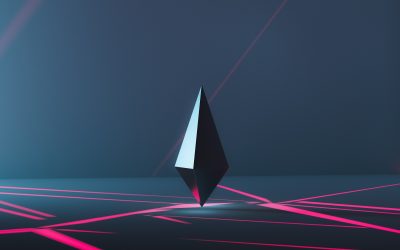With new risks and difficulties appearing daily, cybersecurity is a topic that is rapidly developing. It’s critical to comprehend what cybersecurity trends are developing today and what the future holds as technology continues to evolve at an unparalleled rate. According to Gartner statistics, 88% of boards now see cybersecurity as a business risk rather than just a technological one.
In this article, we will walk you through the future trends in cybersecurity, so you can understand their significance and work accordingly.
Future Trends for Cybersecurity
By 2030, obsolete and badly designed code will be eliminated and replaced with secure alternatives. Even passwords could become unnecessary, unsafe, and outmoded compared to facial recognition software.
Due to the rate at which cybersecurity is advancing, as well as current and future developments that will affect cybersecurity, practically every firm should consider implementing cybersecurity.
Here are the top cybersecurity trends that will probably influence this industry’s future, ranging from artificial intelligence and machine learning to cloud security and quantum computing.
1. Artificial Intelligence and Machine Learning
Artificial intelligence (AI) and Machine Learning (ML) are quickly gaining popularity in cybersecurity. Security experts can act quickly since AI and ML algorithms can quickly scan large amounts of data and spot possible dangers. Cybersecurity systems built on AI and ML are intended to identify and respond to potential security risks quickly, and we may anticipate further development of these technologies in the future.
Applying behavioral analysis to cybersecurity is one way AI is employed. This entails keeping an eye on user and network activities for anomalies that might point to a security breach. Traditional rule-based systems would struggle to pick up on tiny changes in activity patterns, while AI-based behavioral analysis can. These systems can also improve over time at spotting risks with machine learning, becoming more precise with each new danger discovered.
An automated response is another potential use of AI in cybersecurity. In response to potential risks, AI-powered systems can automatically block malicious IP addresses, quarantine infected devices, or notify security personnel of the situation. This facilitates a quicker response time and ensures that threats are immediately neutralized.
2. IoT Security
Devices connected to the internet are multiplying quickly, and this pattern is predicted to continue. However, as the Internet of Things (IoT) expands, there is a greater chance of cyberattacks. IoT devices are susceptible to hacking and other cyberattacks that can be used to get into networks and steal private information.
We may anticipate that the security of IoT devices will receive more attention in the future. New standards and protocols will be created to safeguard and secure these gadgets. This might entail the creation of fresh security solutions, such as enhanced authentication procedures and IoT-specific encryption techniques.
Additionally, we should anticipate increased cooperation between cybersecurity experts and manufacturers of IoT devices. Together, these two teams can create more secure gadgets and are less susceptible to online threats.
3. Cloud Security
Strong cloud security measures are becoming more and more necessary as more enterprises shift their data and apps to the cloud. Cloud security is a complicated topic since it entails protecting both the infrastructure that supports the cloud as well as the data that is kept there.
Future investments in cloud security can be anticipated, and best practices and new technologies will be created to safeguard sensitive data in the cloud. Using blockchain technology, which can offer a more secure way to store and transport data in the cloud, is one possible option. Blockchain is a decentralized, encrypted ledger that lowers the risk of data tampering by enabling data to be stored safely and immutably.
Utilizing zero-trust security, which treats each user and device as untrusted until they can be authenticated, is another option for a solution. Even if an attacker has already gained access to the network, this strategy can aid in lowering the danger of unauthorized access to cloud resources.
4. Quantum Computing
Cybersecurity is only one of the many technical fields that quantum computing has the potential to change. Quantum computing is substantially faster than conventional computing because it processes information using the principles of quantum mechanics.
Cybercriminals might be able to bypass many of the encryption techniques currently in use to safeguard sensitive data if this happens.
However, quantum computing can potentially create new, more secure encryption techniques. Quantum computer attacks are deterred by post-quantum cryptography (PQC), a sort of encryption.
5. Privacy Regulations and Compliance
Stronger privacy laws and compliance standards are becoming more and more popular as data breaches and cyberattacks increase in frequency.
In order to safeguard the privacy of personal data, laws like the General Data Protection Regulation (GDPR) in Europe and the California Consumer Privacy Act (CCPA) in the United States have recently been put into effect.
We can anticipate seeing additional nations enact similar laws to safeguard personal data in the future. As a result, businesses will need to put better data protection procedures in place and ensure they comply with the laws. Significant fines and reputational harm could follow from not adhering to these rules.
6. Supply Chain Security
Supply chain security is becoming more and more important as businesses depend more and more on outside contractors and suppliers. It is crucial to verify that suppliers are secure from cyberattacks because these attacks can significantly affect how secure an organization’s data and infrastructure are.
We may anticipate a greater emphasis on supply chain security in the future. In order to strengthen security, this may entail the creation of new standards and best practices for supply chain security, as well as enhanced cooperation between businesses and their suppliers.
7. Identity and Access Management
Controlling access to sensitive data and equipment is a key aspect of cybersecurity, which is why identity and access management (IAM) is so important. IAM becomes more crucial as businesses become more linked and complicated to guarantee that only authorized users have access to critical resources.
Future investments in IAM can be anticipated to rise. Increasing security can entail utilizing cutting-edge technologies like biometrics and multi-factor authentication. In order to provide a more thorough approach to cybersecurity, IAM systems may also become increasingly integrated with other security technologies, such as cloud security and IoT security.
8. Cyber Insurance
Cyber insurance is becoming more and more necessary as the price of cyber attacks rises to help businesses manage the financial risk of a cyber attack. Data breaches, cyber extortion, and other sorts of cyber attacks can be covered by cyber insurance, which lessens the financial impact on an enterprise.
We may anticipate a rise in cyber insurance use in the future. This can entail creating brand-new insurance policies with cybersecurity-specific coverage as well as stepping up cooperation between insurance providers and cybersecurity experts to enhance risk management.
Bottom line
Finally, the possibility of cyberwarfare grows as countries depend more and more on digital infrastructure. Governments will likely make significant investments in both offensive and defensive capabilities in the next years, increasing state-sponsored cyberattacks. It’s critical to keep up with the most recent cybersecurity developments and technologies as the cyber threat landscape develops.
By comprehending these rising trends, organizations can better plan for the future and guarantee that their infrastructure and data are secure.
With new risks and difficulties appearing daily, cybersecurity is a topic that is rapidly developing. It’s critical to comprehend what cybersecurity trends are developing today and what the future holds as technology continues to evolve at an unparalleled rate. According to Gartner statistics, 88% of boards now see cybersecurity as a business risk rather than just a technological one.
In this article, we will walk you through the future trends in cybersecurity, so you can understand their significance and work accordingly.
Future Trends for Cybersecurity
By 2030, obsolete and badly designed code will be eliminated and replaced with secure alternatives. Even passwords could become unnecessary, unsafe, and outmoded compared to facial recognition software.
Due to the rate at which cybersecurity is advancing, as well as current and future developments that will affect cybersecurity, practically every firm should consider implementing cybersecurity.
Here are the top cybersecurity trends that will probably influence this industry’s future, ranging from artificial intelligence and machine learning to cloud security and quantum computing.
1. Artificial Intelligence and Machine Learning
Artificial intelligence (AI) and Machine Learning (ML) are quickly gaining popularity in cybersecurity. Security experts can act quickly since AI and ML algorithms can quickly scan large amounts of data and spot possible dangers. Cybersecurity systems built on AI and ML are intended to identify and respond to potential security risks quickly, and we may anticipate further development of these technologies in the future.
Applying behavioral analysis to cybersecurity is one way AI is employed. This entails keeping an eye on user and network activities for anomalies that might point to a security breach. Traditional rule-based systems would struggle to pick up on tiny changes in activity patterns, while AI-based behavioral analysis can. These systems can also improve over time at spotting risks with machine learning, becoming more precise with each new danger discovered.
An automated response is another potential use of AI in cybersecurity. In response to potential risks, AI-powered systems can automatically block malicious IP addresses, quarantine infected devices, or notify security personnel of the situation. This facilitates a quicker response time and ensures that threats are immediately neutralized.
2. IoT Security
Devices connected to the internet are multiplying quickly, and this pattern is predicted to continue. However, as the Internet of Things (IoT) expands, there is a greater chance of cyberattacks. IoT devices are susceptible to hacking and other cyberattacks that can be used to get into networks and steal private information.
We may anticipate that the security of IoT devices will receive more attention in the future. New standards and protocols will be created to safeguard and secure these gadgets. This might entail the creation of fresh security solutions, such as enhanced authentication procedures and IoT-specific encryption techniques.
Additionally, we should anticipate increased cooperation between cybersecurity experts and manufacturers of IoT devices. Together, these two teams can create more secure gadgets and are less susceptible to online threats.
3. Cloud Security
Strong cloud security measures are becoming more and more necessary as more enterprises shift their data and apps to the cloud. Cloud security is a complicated topic since it entails protecting both the infrastructure that supports the cloud as well as the data that is kept there.
Future investments in cloud security can be anticipated, and best practices and new technologies will be created to safeguard sensitive data in the cloud. Using blockchain technology, which can offer a more secure way to store and transport data in the cloud, is one possible option. Blockchain is a decentralized, encrypted ledger that lowers the risk of data tampering by enabling data to be stored safely and immutably.
Utilizing zero-trust security, which treats each user and device as untrusted until they can be authenticated, is another option for a solution. Even if an attacker has already gained access to the network, this strategy can aid in lowering the danger of unauthorized access to cloud resources.
4. Quantum Computing
Cybersecurity is only one of the many technical fields that quantum computing has the potential to change. Quantum computing is substantially faster than conventional computing because it processes information using the principles of quantum mechanics.
Cybercriminals might be able to bypass many of the encryption techniques currently in use to safeguard sensitive data if this happens.
However, quantum computing can potentially create new, more secure encryption techniques. Quantum computer attacks are deterred by post-quantum cryptography (PQC), a sort of encryption.
5. Privacy Regulations and Compliance
Stronger privacy laws and compliance standards are becoming more and more popular as data breaches and cyberattacks increase in frequency.
In order to safeguard the privacy of personal data, laws like the General Data Protection Regulation (GDPR) in Europe and the California Consumer Privacy Act (CCPA) in the United States have recently been put into effect.
We can anticipate seeing additional nations enact similar laws to safeguard personal data in the future. As a result, businesses will need to put better data protection procedures in place and ensure they comply with the laws. Significant fines and reputational harm could follow from not adhering to these rules.
6. Supply Chain Security
Supply chain security is becoming more and more important as businesses depend more and more on outside contractors and suppliers. It is crucial to verify that suppliers are secure from cyberattacks because these attacks can significantly affect how secure an organization’s data and infrastructure are.
We may anticipate a greater emphasis on supply chain security in the future. In order to strengthen security, this may entail the creation of new standards and best practices for supply chain security, as well as enhanced cooperation between businesses and their suppliers.
7. Identity and Access Management
Controlling access to sensitive data and equipment is a key aspect of cybersecurity, which is why identity and access management (IAM) is so important. IAM becomes more crucial as businesses become more linked and complicated to guarantee that only authorized users have access to critical resources.
Future investments in IAM can be anticipated to rise. Increasing security can entail utilizing cutting-edge technologies like biometrics and multi-factor authentication. In order to provide a more thorough approach to cybersecurity, IAM systems may also become increasingly integrated with other security technologies, such as cloud security and IoT security.
8. Cyber Insurance
Cyber insurance is becoming more and more necessary as the price of cyber attacks rises to help businesses manage the financial risk of a cyber attack. Data breaches, cyber extortion, and other sorts of cyber attacks can be covered by cyber insurance, which lessens the financial impact on an enterprise.
We may anticipate a rise in cyber insurance use in the future. This can entail creating brand-new insurance policies with cybersecurity-specific coverage as well as stepping up cooperation between insurance providers and cybersecurity experts to enhance risk management.
Bottom line
Finally, the possibility of cyberwarfare grows as countries depend more and more on digital infrastructure. Governments will likely make significant investments in both offensive and defensive capabilities in the next years, increasing state-sponsored cyberattacks. It’s critical to keep up with the most recent cybersecurity developments and technologies as the cyber threat landscape develops.
By comprehending these rising trends, organizations can better plan for the future and guarantee that their infrastructure and data are secure.




0 Comments